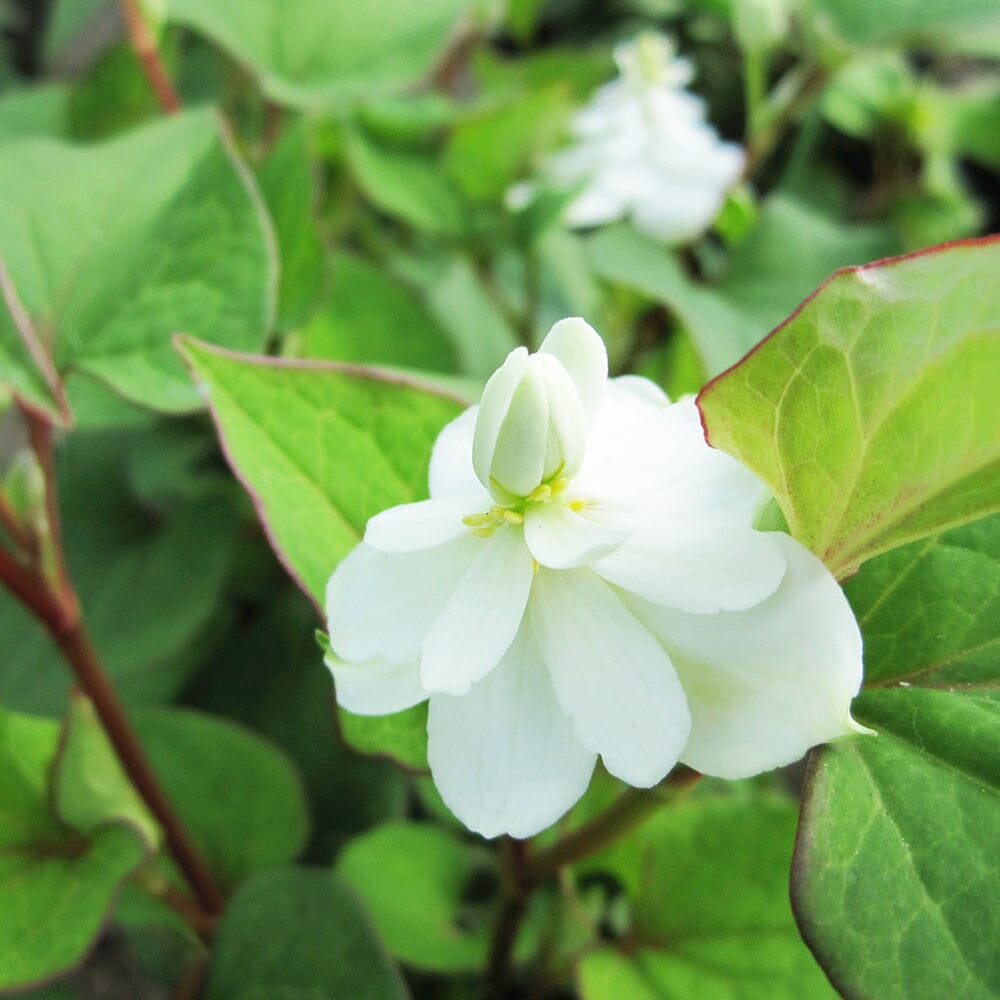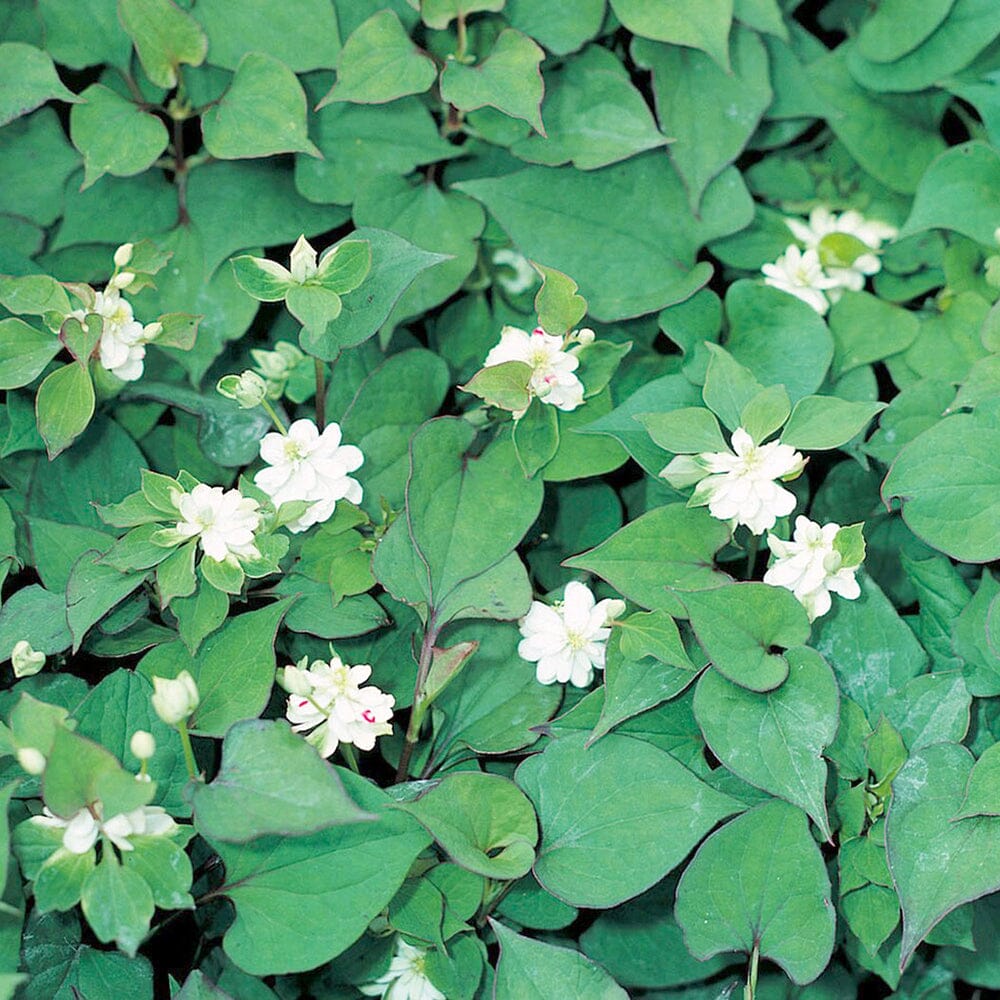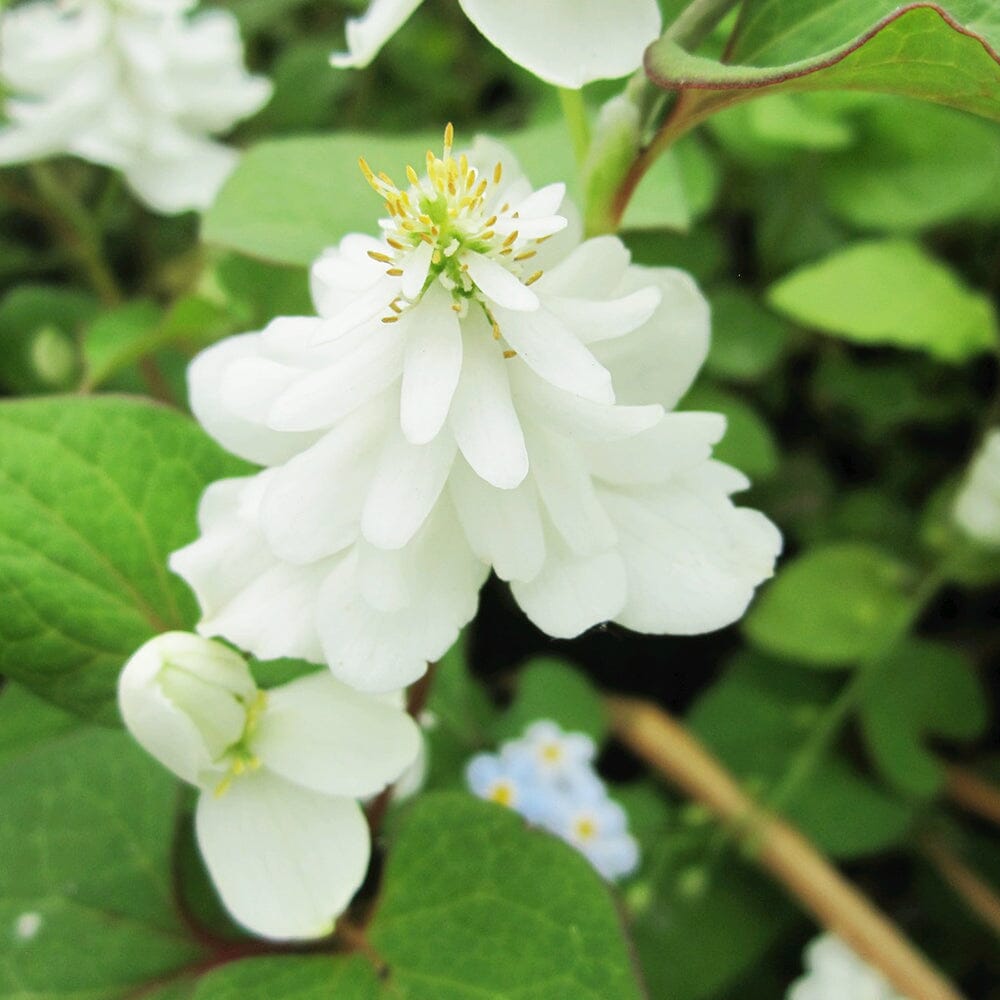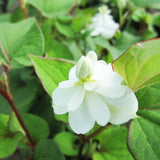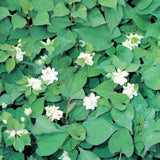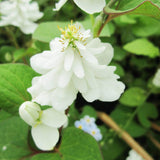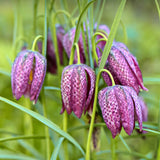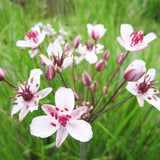Houttuynia Cordata Plena Aquatic Pond Plant - Chameleon Plant
Houttuynia cordata 'Plena,' commonly known as Chameleon Plant 'Plena,' is a cultivar of Houttuynia cordata that is valued for its unique double flowers and colorful foliage. Here's a detailed description and care guide for Houttuynia cordata 'Plena':
Description:
Houttuynia cordata 'Plena' is a low-growing perennial plant that typically reaches a height of 8-12 inches (20-30 cm) and spreads vigorously by rhizomes to form dense clumps. The plant features heart-shaped leaves that grow in an alternating pattern along the stems. The foliage of 'Plena' is its main attraction. The leaves are primarily green but are variegated with splashes of cream, yellow, and red. From late spring to summer, 'Plena' produces double flowers that resemble small rosettes. The flowers are typically white or cream in color and have an appealing fragrance. Houttuynia cordata 'Plena' adds both visual and aromatic interest to garden borders, groundcovers, or container plantings.
Care Guide:
Lighting: Houttuynia cordata 'Plena' prefers partial shade to full shade. It grows best in locations with filtered sunlight or dappled shade, especially during the hot afternoon hours. Some shade is beneficial to prevent leaf scorch. However, it can tolerate some morning sun or brighter conditions if the soil remains consistently moist.
Water: Houttuynia cordata 'Plena' prefers consistently moist soil conditions. It naturally occurs in wet habitats, such as stream banks or water edges. Ensure the soil remains evenly moist but not waterlogged. Water deeply when the top inch of soil feels dry to the touch, especially during dry spells or hot weather.
Soil: Houttuynia cordata 'Plena' prefers fertile, well-draining soil. It can tolerate a range of soil types, including loam, clay, or sandy soil. However, it thrives in moist soil conditions. Adding organic matter, such as compost or well-rotted manure, can improve soil fertility and moisture retention.
Temperature: Houttuynia cordata 'Plena' is hardy in USDA hardiness zones 5-9. It can tolerate a range of temperatures but generally prefers moderate conditions. Protect the plant from extreme heat or prolonged periods of frost. Mulching around the base of the plant can help insulate the roots and retain moisture.
Fertilizer: Houttuynia cordata 'Plena' does not require heavy fertilization. A light application of a balanced, slow-release fertilizer in early spring can provide essential nutrients. Avoid over-fertilization, as it can result in excessive leaf growth and reduced variegation.
Maintenance: Houttuynia cordata 'Plena' is a low-maintenance plant. Regular maintenance involves removing any dead or yellowed foliage to maintain a tidy appearance. The plant can spread aggressively, so occasional thinning or trimming may be necessary to control its growth and prevent it from overtaking other plants.
Propagation: Houttuynia cordata 'Plena' can be propagated through division or by taking stem cuttings. Division is best done in early spring or early autumn. Carefully separate the clumps, ensuring each division has healthy roots and stems, and replant them in suitable soil or containers. Stem cuttings can be taken in late spring or early summer and rooted in a moist, well-draining potting mix.
Pests and Diseases: Houttuynia cordata 'Plena' is generally resistant to pests and diseases. However, it may occasionally attract slugs or be susceptible to fungal diseases if growing conditions are unfavorable. Monitor the plant for any signs of pests or diseases and take appropriate measures if necessary.
By following these care guidelines, you can enjoy the colorful foliage and double flowers of Houttuynia cordata 'Plena' in your garden borders, groundcovers, or container plantings. Adjust the care routine based on your specific growing conditions and monitor the plant for any signs of stress, pests, or diseases. With proper care, Houttuynia cordata 'Plena' can provide an eye-catching and aromatic display, adding interest and charm to your outdoor spaces.
Selection:
Research different species of marginal pond plants to find ones that suit your pond's conditions and your aesthetic preferences. Consider factors such as height, flower colour, foliage texture, and seasonal interest when selecting plants.
Placement:
Observe the natural conditions of your pond, such as sun exposure, soil type, and water movement, and choose plants that are adapted to those conditions. Create different planting zones around the pond, with plants that prefer wet soil closer to the water's edge and those that tolerate drier soil further away.
Sunlight:
Marginal plants typically thrive in full sun to partial shade. Some species can tolerate more shade, but for optimal growth and flowering, provide them with at least 6 hours of direct sunlight per day.
Water Depth:
Determine the water depth requirements of the marginal plants you choose. Some plants prefer water up to 6 inches deep, while others can tolerate water up to 12 inches or more. Ensure that the water level remains consistent within the preferred range for the chosen plants.
Soil:
Marginal plants prefer a rich, loamy soil that retains moisture but is not waterlogged. Amend the soil with organic matter, such as compost or well-rotted manure, to improve its fertility and drainage. Avoid using heavy clay soil, as it can become compacted and restrict root growth.
Planting:
Dig a hole slightly larger than the root ball of the plant and loosen the soil at the bottom. Place the plant in the hole, ensuring that the crown is level with or slightly above the soil surface. Backfill the hole with soil and gently firm it around the plant to eliminate air pockets. Water thoroughly after planting to settle the soil and provide initial hydration.
Mulching:
Apply a layer of organic mulch around the base of the plants to suppress weeds, conserve moisture, and regulate soil temperature.Use materials like straw, shredded bark, or compost, and maintain a depth of 2-3 inches.
Watering:
Marginal plants prefer consistently moist soil but should not be waterlogged. Monitor the moisture level regularly and water as needed to keep the soil evenly moist. During hot and dry periods, provide supplemental watering to prevent the soil from drying out.
Fertilization:
Marginal plants generally do not require heavy fertilization if the soil is nutrient-rich. However, if growth appears weak or leaves show signs of nutrient deficiencies, apply a balanced slow-release fertilizer according to the manufacturer's instructions.
Maintenance:
Remove any yellowing or dead leaves to maintain plant health and appearance. Divide overcrowded plants every few years to prevent competition for resources and promote vigorous growth. Prune back excessive growth to maintain a tidy appearance and to prevent plants from encroaching on other plants or the pond itself.
Winter Care:
Hardy marginal plants can withstand winter temperatures and require minimal care. Cut back dead foliage in late fall or early spring to tidy up the planting area. In colder regions, consider protecting tender plants with a layer of mulch or covering them with burlap during winter to prevent frost damage.
Monitoring and Troubleshooting:
Regularly inspect plants for signs of pests, diseases, or nutrient deficiencies. Address any issues promptly with appropriate treatments, such as organic insecticides, fungicides, or nutrient amendments. By following these detailed tips and providing proper care, you can create a beautiful and thriving planting zone around your pond, enhancing its visual appeal and supporting a diverse ecosystem.








